— Published on 22 Apr 2024
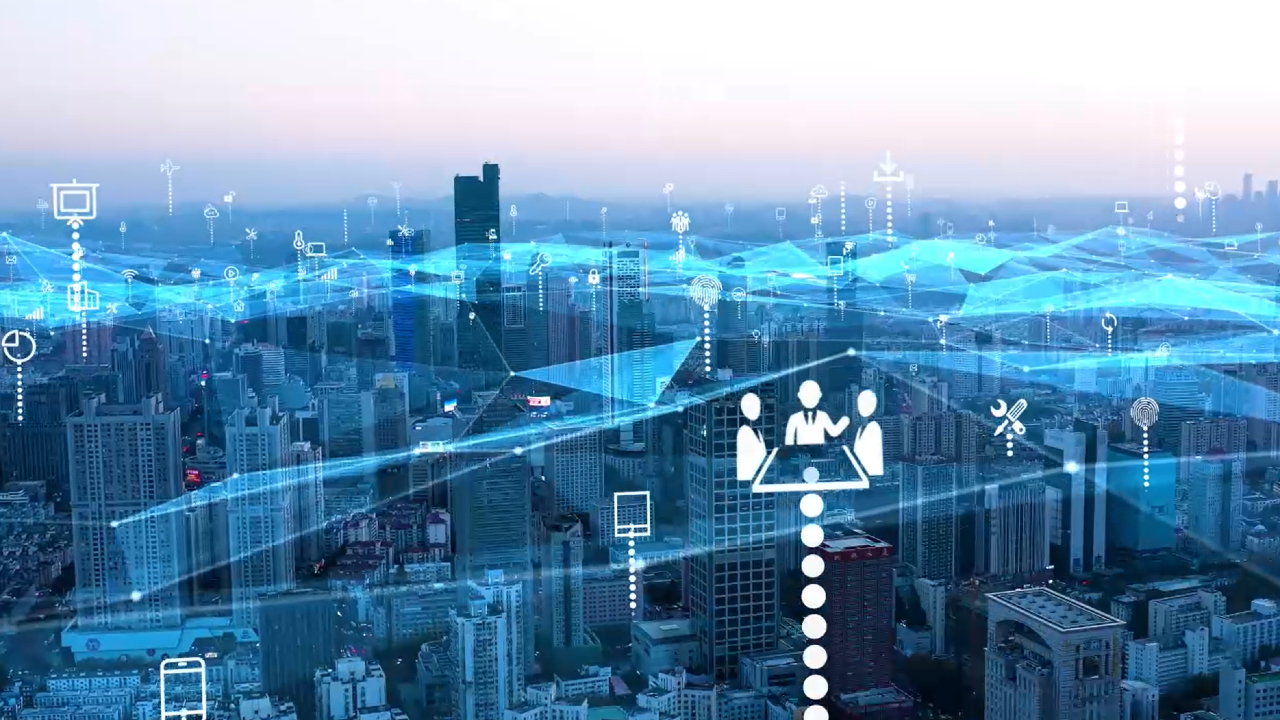
A Wireless Access Point (Wi-Fi AP) is a networking hardware device that enables Wi-Fi enabled devices such as smartphones, laptops, and tablets to connect to a wired network for internet access. Wi-Fi APs primarily provide wireless connectivity within a specific range, typically within an office or public space. This technology offers convenient network access without the need for wired cabling. According to a recent report by Technavio (2023), the growth of Wi-Fi APs has been accelerating at a CAGR rate of 6%.
In most office environments, employees rely heavily on Wi-Fi AP connectivity for their work. It facilitates communication, information searches, and, most importantly, business operations. Disconnection from the Wi-Fi network can have serious consequences, leading to potential loss of business revenue. Even experiencing slowness in connection speed can significantly impact day-to-day business operations.
Today, we will discuss best practices for deploying cabling in Wi-Fi solutions. First, let's examine the current Wi-Fi standards available. According to the IEEE 802.11 Standard for Wi-Fi Technology, the latest approved and published standard is Wi-Fi 6/6E. Wi-Fi 6 represents an upgrade from Wi-Fi 5 in several aspects, including increased data rates, enhanced MU-MIMO efficiency, and improved support for POE power. As for Wi-Fi 7, it is currently awaiting project authorization request (PAR) approval. However, Wi-Fi 7 is expected to offer significant improvements in terms of data rate support as shown in the table below.
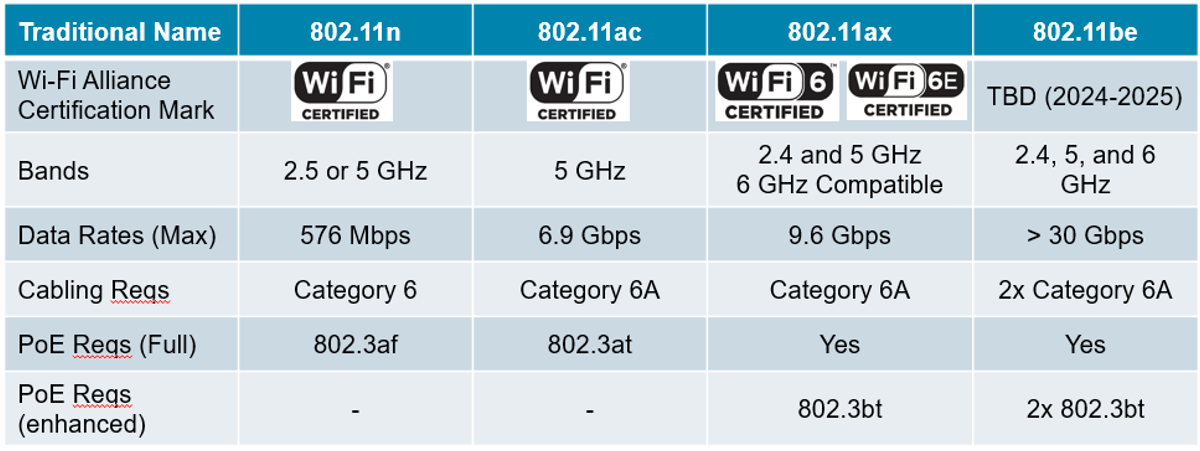
Data rate is a key factor in Wi-Fi AP deployment as it determines the capacity and quality of connections within an area, such as an office environment. You may have heard employees complain about connectivity slowness frequently. Wi-Fi 6/6E can support a maximum of 9.6 Gbps, compared to 6.9 Gbps for Wi-Fi 5, representing a 40% increase. Wi-Fi 7, on the other hand, is expected to triple data rates to over 30 Gbps.
To maximize the capacity of Wi-Fi APs, proper cabling is essential. Without adequate connectivity, even the best Wi-Fi APs may not reach their full potential, leading to issues such as slowness.
For Wi-Fi 5 and above, Category 6A cable is necessary, capable of supporting data rates up to 10 Gbps.
In the case of Wi-Fi 7, twice the amount of Category 6A cable is required, as specified in TIA-TSB-162-B Telecommunication Guidelines for Wireless Access Points.
Panduit recommend deploying 4 cables per Wi-Fi AP on Day-1 deployment with 1 cable in-used while 3 cables un-used as per below diagram.
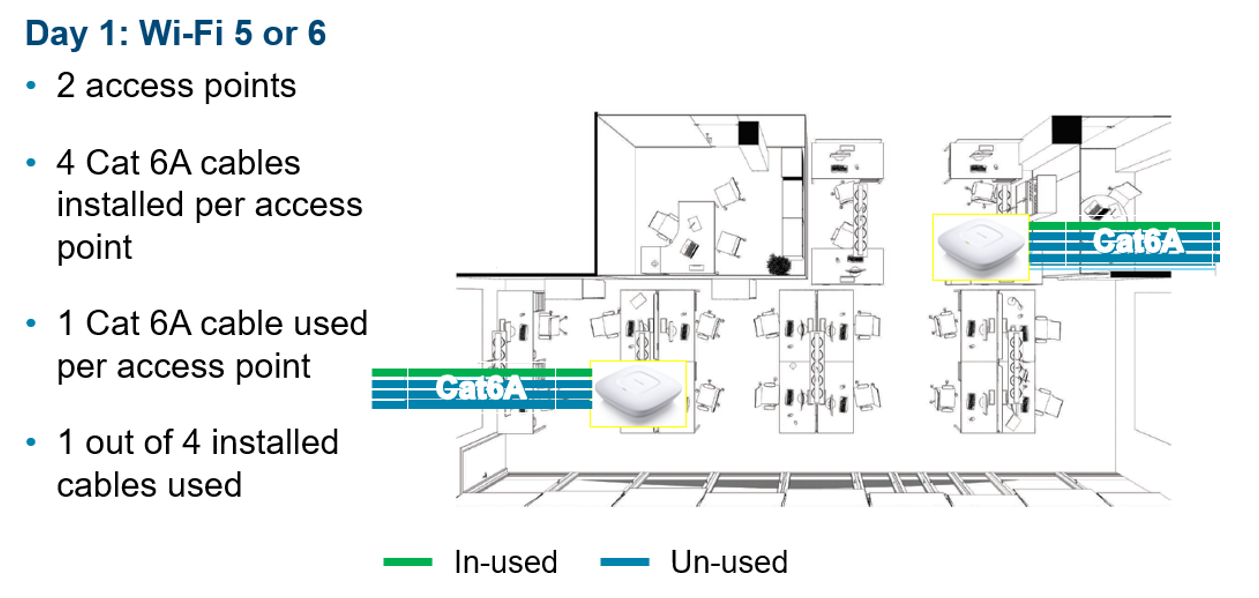
On Day-2 deployment, which is typically happen as an expansion, the additional cable from Day-1 will be used to expand the Wi-Fi AP installation. This significantly simplify the process due to infrastructure cabling had already been installed leading to quick and simple expansion process as shown below:
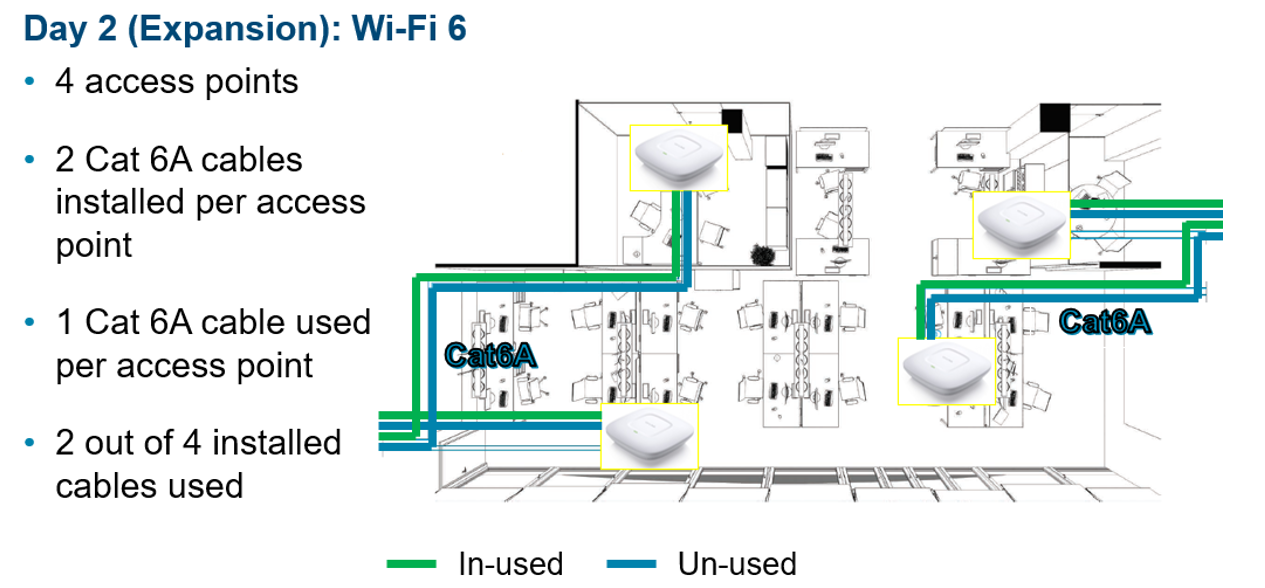
The demand for higher data rates has push the technology upgrade to happens at faster rate which reduce the efficiency of capital investment. To support this agenda, the rest of the additional cable can be used to support Wi-Fi AP upgrade from Wi-Fi 6 to Wi-Fi 7 technology as shown in diagram below:
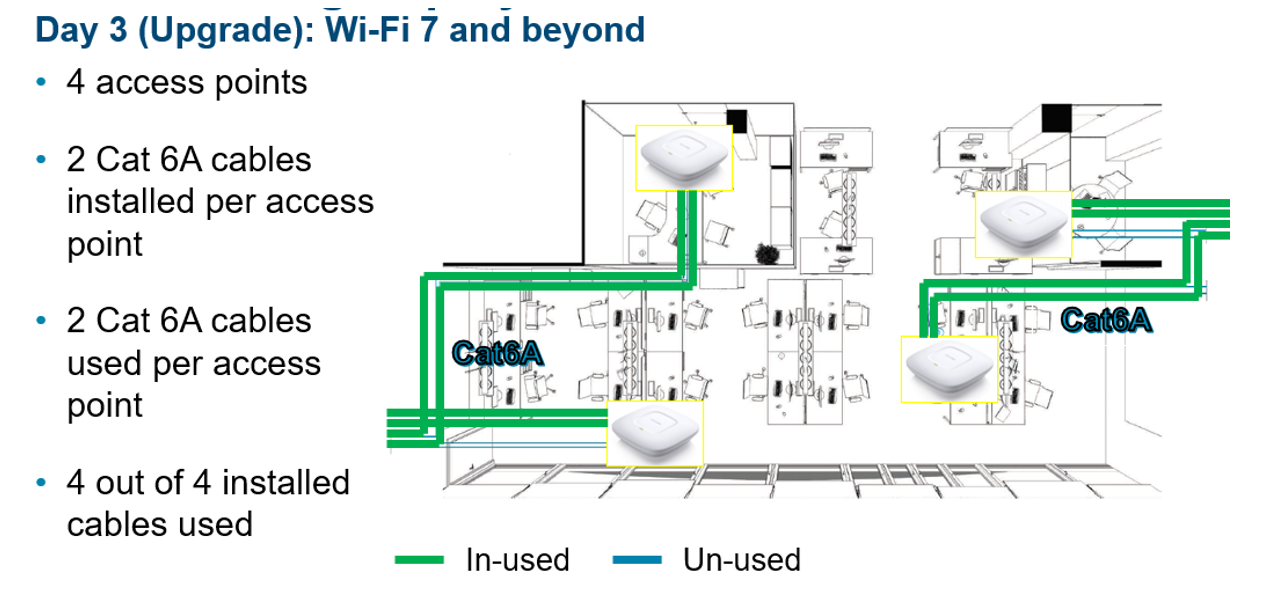
To replace the cabling infrastructure, walls and ceilings must be removed to create pathways for cable routing. While the initial capital expenditure on Day 1 is higher with the installation of four cables, subsequent upgrades will be less costly, resulting in a significantly lower total cost. Below is a summary of the comparison between Day 1 deployment options.
| Option | Description | Initial Cost | Upgrade Cost | Total Cost |
|---|---|---|---|---|
| 1 | 4 cables today | $4,000 | $0 | $4,000 |
| 2 | 2 cables today, 2 cables on day 2 | $2,000 | $7,000 | $9,000 |
| 3 | 1 cable today, 1 cable on day 2, 2 cables on day 3 | $1,000 | $12,000 | $13,000 |
#Cat6A #RJ45 #EthernetCable #Wi-Ficabling #CopperCable #CopperCabling #10GBASE-T #FutureProofNetworkCabling #CostSavingCabling #FutureProofWi-FiSolution #PoweroverEthernet(POE)CablingSolution
Large Paragraph Text Used As A Subheading
Pellentesque non magna eget ex lobortis finibus. Lorem ipsum dolor sit amet, consectetur adipiscing elit. Etiam nec arcu non eros hendrerit viverra a vitae libero. Etiam et ultricies nulla. Donec euismod lectus magna, eu dignissim mauris hendrerit vulputate.
| Time | Place | Details |
|---|---|---|
| 10:00 am - 10:55 am | Expo Hall | Meet and greet in the lobby outside the Expo Hall before the General Assembly. |
| 11:00 am - 11:55 am | Rm 314 | Expert Track: TOP 10 WAYS TO MAKE A DIFFERENCE IN THE INDUSTRY | John Dough, CFO Marketizingly |
| 11:00 am - 11:55 am | Rm 159 | Social Track: MODERN NETWORKING | Hosted by: SponsorName |
Pellentesque non magna eget ex lobortis finibus. Lorem ipsum dolor sit amet, consectetur adipiscing elit. Etiam nec arcu non eros hendrerit viverra a vitae libero. Etiam et ultricies nulla. Donec euismod lectus magna, eu dignissim mauris hendrerit vulputate.